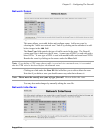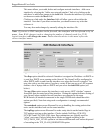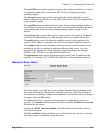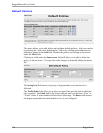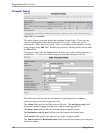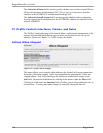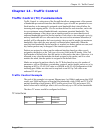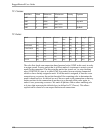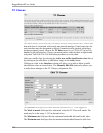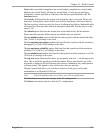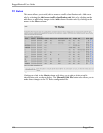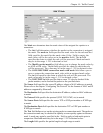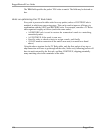
Chapter 14 - Traffic Control
Chapter 14 - Traffic Control
Traffic Control (TC) Fundamentals
Traffic Control is a subsystem of the firewall that allows management of the amount
of bandwidth per network interface that different types of traffic are permitted to use.
Each interface to be managed is assigned a total bandwidth that it should allow for
incoming and outgoing traffic. Classes are then defined for each interface, each with
its own minimum assured bandwidth and a maximum permitted bandwidth. The
combined minimum of the classes on an interface must be no more than the total
outbound bandwidth specified for the interface. Each class is also assigned a priority,
and any bandwidth left over after each class has received its minimum allocation (if
needed) will be allocated to the lowest priority class up until it reaches its maximum
bandwidth, after which the next priority is allocated more bandwidth. When the
specified total bandwidth for the interface is reached, no further packets are sent, and
any further packets may be dropped if the interface queues are full.
Packets are assigned to classes on the outbound interface based on either a mark
assigned to the packet, or the ToS (type of service) field in the IP header. If the ToS
field matches a defined class, then the packet is allocated to that class. Otherwise, it is
allocated to any class that matches the mark assigned to the packet, and if no class
matches the mark, then the packet is assigned to the default class.
Marks are assigned to packets either by the TC Rules based on any of a number of
parameters, such as IP address, port number, protocol, packet length, and so on, or by
mapping an 802.1p VLAN CoS value to a MARK in the VLAN configuration of the
incoming port. Marks are also used to map back to an 802.1p CoS value on an
outbound VLAN port.
Traffic Control Example
The goal of this example is to operate Ethernet port 1 at 5Mbit/s and ensure that UDP
source port 20000 traffic gets at least half the bandwidth, while ICMP and TCP ACK
packets should have high priority, HTTP traffic gets at least 20% and at most 50%,
and all other traffic should get what is left over but only up to 50% of the bandwidth.
The three TC menus would be configured as follows:
TC Interfaces
Interface Inbound
bandwidth
Outbound
bandwidth
eth1 5000kbit 5000kbit
RuggedCom 129



